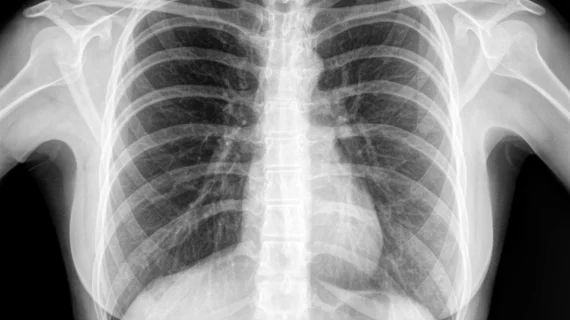Efficient imaging: How radiology departments can decrease unnecessary x-rays
Tracking repeat rates and providing additional education to technologists can help radiology departments produce fewer unnecessary x-rays, according to a new study published in Current Problems in Diagnostic Radiology.
“The impact of extra views, while small, is not negligible,” wrote lead author Daniel Lee, MD, with the department of radiology at Pennsylvania Hospital in Philadelphia, and colleagues. “The technologist must spend additional time to acquire the views. Extra views disrupt radiologist work flow due to the added time spent interpolating the two disconnected views.”
They also noted that these extra views expose patients to additional radiation and take up a health system’s valuable storage space.
With these factors in mind, the team went to work. A one-sentence dictation macro was placed in the radiology report whenever a chest x-ray included an extra view. The radiologist would include the “perceived reason” for the extra view in their notes. Thirteen weeks after that macro was implemented, the team let radiology technologists (RTs) know their repeat rates were being monitored and provided “refreshers on obtaining frontal and lateral radiographs.” Twelve weeks of pre-intervention data and twelve weeks of post-intervention data were collected and compared.
The authors found that 5.9 percent of chest x-rays included extra images before the intervention. After intervention, that number dropped to 5 percent. A “significant decrease” in the frontal view repeat rate was observed in studies that included both PA and lateral views. The repeat rate for portable AP radiographs did not have shift significantly.
“The results of data monitoring with a simple teaching intervention led to a significant decrease in unnecessary extra radiographs, almost exclusively from PA frontal radiographs,” Lee at al. wrote. “These results are within the desired outcome, given that acceptable repeat rates have been suggested to be less than 5 percent. This standard has been adopted by our radiology department.”
Overall, the authors concluded, this study displays the effectiveness of “implementing a simple strategy of providing refresher tutorials with supporting materials to RTs and by tracking repeat rates.”
“Continued monitoring has the potential to result in sustained improvement in radiologist workflow and patient care,” they wrote.

